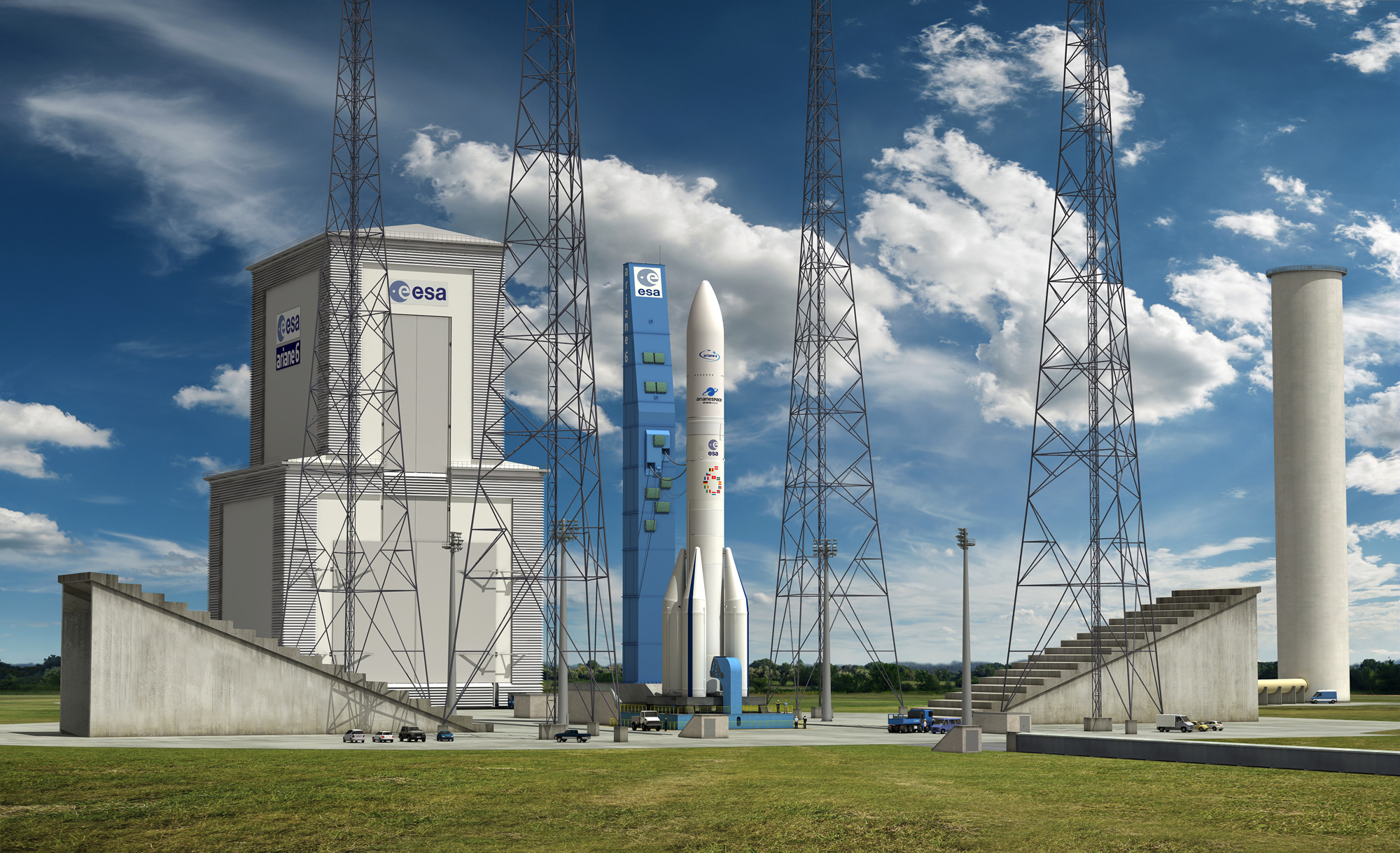The European Space Agency wants to be able to launch its own astronauts
Ambitions could eventually include sending astronauts to the moon and Mars.

The European Space Agency (ESA) is pushing for its members to back a program to allow it to independently send astronauts to space and set ambitious, long-term human exploration goals.
While Europeans have been flying to space since the 1970s, only three countries — the Soviet Union (now Russia), the United States and China — have so far been able to independently launch astronauts into space.
But this could change, if ESA's leader and its astronauts get their way, as Europe looks to both seize new opportunities and not fall further behind.
Giant leaps: Biggest milestones of human spaceflight
"Why should Europe be excluded from the group of countries that master human spaceflight on their own? Shall we take the risk that Europe is bypassed by more and more countries in developing the next strategic and economic zones, outer space?" ESA Director General Josef Aschbacher said during a speech at the European Space Summit in Toulouse, France, on Feb. 16.
Aschbacher noted that the U.S. and China have identified clear political and technological space targets and are executing plans. Europe could do the same. In his vision, Europeans could be walking on the moon by 2035, with a possible voyage to Mars then within sight.
The moment has come for a European ambition for space. Here and now. Let's explore space, together.#SpaceSummit #SpaceAmbitionMy full speech can be read here: https://t.co/YpjdKvPZh9 pic.twitter.com/IGUcOyi8g4February 16, 2022
As a first step, Aschbacher is now setting up a high-level advisory group on human space exploration as part of a broader "European Ambition for Space," following a speech by French President Emmanuel Macron earlier on Feb. 16 that called for a study of possibilities for a European human spaceflight program.
Get the Space.com Newsletter
Breaking space news, the latest updates on rocket launches, skywatching events and more!
ESA's astronauts are on board. On that same day, they published a "European Astronauts' Manifesto," which both calls to an innate drive of humans to explore and warns of "repeating the mistakes of the past in other strategic domains, which left us dependent on external players for our energy requirements or information technology development."
The manifesto notes that Europe is still among the world leaders in areas such as Earth observation, navigation and space science, but it is "lagging in the increasingly strategic domains of space transportation and exploration."
The first steps toward gaining independent human spaceflight capabilities will be first political and then technical, according to Frank De Winne, head of ESA's European Astronaut Center.
"It's first of all the political question that we need to answer," De Winne said at the International Symposium on Outlook and Cooperation on Near-Earth Orbit Human Space Flight on Feb. 17, referring to securing support from ESA's 22 member states. "We hope to have that answer by the end of the year."
ESA will hold its once-every-three-years ministerial meeting late this year, in which member states make decisions on programs to adopt and their level of funding. If political backing is gained, the agency can move on to hammering out the details.
"Which launcher we will use is not decided. Should it be an Ariane 6 [or] should we do something different like also our colleagues in NASA have done with SpaceX or with other companies?" De Winne said.
Europe's current launch capabilities are led by Arianespace, which makes Ariane rockets. However, a number of startups are now developing small rockets and could make first orbital launch attempts as soon as late this year. In November, ESA astronaut Matthias Maurer reached the ISS aboard a Dragon capsule belonging to the American company SpaceX.
The human spaceflight ambition is one of two "inspirators" and three "accelerators" adopted in the 2021 "Matosinhos Manifesto" to accelerate the use of space in Europe. Stated goals include tackling the urgent and unprecedented societal, economic and security challenges faced by Europe and its citizens.
Europe has dabbled with human spaceflight before. In the early 1980s, for example, the French space agency CNES began studies on the Hermes space plane, which would have launched using the Ariane 5 rocket. The project was abandoned in 1992, however, following numerous delays and cost and performance issues, without a single spacecraft being made.
Research on important aspects of European crewed flight is already ongoing. A study presented at the 2021 Global Space Exploration Conference in St. Petersburg, Russia, looked at how to make the Guiana Space Center, Europe's spaceport in French Guiana, suitable for human spaceflight.
Meanwhile ESA's astronauts are waiting. "All we need is the support of decision-makers: give ESA the mandate to develop an ambitious roadmap for Europe's future in space exploration, let us achieve together what once was 'impossible!'" their manifesto states. "The time to set sail is now."
Follow us on Twitter @Spacedotcom or on Facebook.
Join our Space Forums to keep talking space on the latest missions, night sky and more! And if you have a news tip, correction or comment, let us know at: community@space.com.

Andrew is a freelance space journalist with a focus on reporting on China's rapidly growing space sector. He began writing for Space.com in 2019 and writes for SpaceNews, IEEE Spectrum, National Geographic, Sky & Telescope, New Scientist and others. Andrew first caught the space bug when, as a youngster, he saw Voyager images of other worlds in our solar system for the first time. Away from space, Andrew enjoys trail running in the forests of Finland. You can follow him on Twitter @AJ_FI.









